Ever stared at your reflection and thought, “Why won’t these dark spots just disappear?” You’re not alone. Hyperpigmentation—whether it’s melasma, post-acne marks, or sunspots—can feel like an unwelcome guest on your skin. It’s that moment when you catch a glimpse of uneven tone and your heart sinks just a little. But don’t worry, I’ve got your back (and face). Today, we’re diving deep into everything you need to know about choosing the perfect face wash for hyperpigmentation. From key ingredients to real-life tips, this guide is your skincare BFF.
Imagine waving goodbye to those stubborn patches and saying hello to a more even, glowing complexion. Sound dreamy? Stick around—by the end of this post, you’ll feel empowered, informed, and ready to tackle dark spots head-on.
Understanding Hyperpigmentation: The Science Behind the Spots
Before we jump into products, let’s geek out for a sec and understand what hyperpigmentation actually is. In simple terms, it’s when certain areas of your skin produce more melanin—the pigment that gives your skin its color—leading to darker patches. Melanin is like your natural sunscreen, shielding you from UV damage. But when it’s overproduced in localized spots, those spots stick around like stubborn guests at a party.
Here are the main culprits:
- Sun Exposure: UV rays kick melanin production into overdrive. Think of it as your skin panicking and laying down extra protection.
- Hormonal Changes: Pregnancy melasma (the “mask of pregnancy”), birth control pills, and menopause can all trigger uneven pigmentation.
- Inflammation & Injury: Acne, cuts, burns—even aggressive extractions—can lead to post-inflammatory hyperpigmentation (PIH).
- Aging: As cell turnover slows, old pigmented cells stick around longer, forming “age spots” or sunspots.
Think of your skin like a canvas: too much paint in one spot, and you’ve got an uneven masterpiece. But the good news is, with the right cleansing routine and active ingredients, you can help even out that tone and prevent new “paints” from accumulating.
Types of Hyperpigmentation: Know Your Enemy
Not all dark spots are created equal. Understanding the type you’re dealing with helps you pick the most effective treatment.
Melasma
Often hormonal, melasma typically appears as symmetrical patches on the cheeks, forehead, and upper lip. It’s common during pregnancy or with hormone therapy. Melasma can be stubborn—it might fade, then return with sun exposure.
Post-Inflammatory Hyperpigmentation (PIH)
Follow acne breakouts, eczema flare-ups, or any skin injury. PIH is your skin’s way of overcompensating with pigment while healing. The good news? PIH often fades faster than melasma, especially with consistent care.
Sunspots (Solar Lentigines)
These are the classic “liver spots” or “age spots”—flat, brown spots from chronic UV exposure. They’re generally harmless but can deepen over time if unprotected.
Freckles vs. Hyperpigmentation
Freckles are genetic and appear as small tan spots, often more visible in the sun. Unlike hyperpigmentation, freckles can lighten in winter and darken in summer. They’re cute, but if you’re chasing an even tone, they’re part of the equation too!
Key Ingredients to Look for in Your Face Wash
Choosing the right face wash for dark spots and hyperpigmentation isn’t just about picking the prettiest bottle. It’s about the science inside. Here are the MVPs you’ll want on your label:
Vitamin C
This antioxidant superstar brightens skin and inhibits excess melanin production. It neutralizes free radicals from pollution and UV, making it a multitasking marvel. Look for stable forms like ascorbic acid or sodium ascorbyl phosphate.
Niacinamide
Not just a fancy name. Niacinamide prevents melanin from migrating to the skin’s surface and strengthens your skin barrier. Think of it as the gatekeeper against pigmentation, while also reducing redness and strengthening lipids.
Kojic Acid
Derived from fungi (yes, fungi!), kojic acid stops tyrosinase, the enzyme responsible for melanin production. If you’ve ever wondered “can laser remove dark spots?”, know that kojic acid is a gentler, at-home alternative. It’s especially great for PIH.
Alpha Arbutin
A more refined derivative of hydroquinone, alpha arbutin offers a safer, less irritating melanin-inhibiting effect. It’s like hydroquinone’s kinder, gentler cousin.
Azelaic Acid
Ideal for acne-prone skin, azelaic acid not only fights breakouts but also gently lightens dark marks by inhibiting tyrosinase. Bonus: it calms inflammation and redness.
Glycolic & Lactic Acids (AHAs)
These chemical exfoliants help remove the top layer of dead, pigmented skin cells. Use sparingly in face washes—over-exfoliating can lead to irritation and rebound hyperpigmentation.
Ingredients to Use with Caution
While some ingredients are skincare superheroes, others require a watchful eye:
Hydroquinone
Often called the gold standard for hyperpigmentation, hydroquinone can be highly effective—but also irritating or over-prescribed. It can cause ochronosis (blue-black pigmentation) if misused, so always do a patch test and consider consulting a dermatologist for concentrations above 2%.
Retinol (Vitamin A Derivatives)
Retinol speeds up cell turnover, revealing fresh skin underneath pigmented layers. But it can increase sun sensitivity, leading to new pigmentation if you skip SPF. If you plan to use hydroquinone and retinol together, introduce one product at a time and use them on alternate nights.
Benzoyl Peroxide
Great for acne, but potentially drying and irritating. In active breakouts, it can sometimes worsen PIH. Use a separate cleanser for acne days, and switch to a pigmentation-focused wash as your skin calms down.
Common Mistakes That Worsen Hyperpigmentation
We all want quick results, but some habits can actually backfire:
- Picking & Squeezing: Every time you pop a zit, you risk more PIH. Hands off!
- Skipping Sunscreen: Even a 5-minute walk in the sun can trigger melanin overdrive.
- Over-Exfoliating: Too much mechanical or chemical exfoliation damages your barrier, leading to more inflammation and pigmentation.
- Ignoring Ingredients: A “brightening” label doesn’t guarantee results. Always check active percentages and formulations.
Top Face Washes for Hyperpigmentation in 2025
Alright, let’s get to the fun part: product picks! I’ve tested (and loved) these over months, across different skin types and seasons.
| Product | Key Ingredients | Skin Type | Why We Love It |
|---|---|---|---|
| CeraVe Hydrating Facial Cleanser | Ceramides, Hyaluronic Acid | All | Gentle, non-comedogenic, and keeps skin barrier happy without stripping moisture. Perfect base for active ingredients to follow. |
| Cetaphil Healthy Radiance PHA Exfoliating Cleanser | PHA (Gluconolactone), Niacinamide | Sensitive | Mild, non-irritating exfoliation for brightening, plus soothing properties for irritated or reactive skin. |
| La Roche-Posay Pigmentclar Brightening Foaming Cream | Lipo-Hydroxy Acid, Niacinamide | Oily/Combination | Controls oil, refines pores, and evens out tone without over-drying—ideal for summer months. |
| Nasola Kojic Acid Face Wash | Kojic Acid, Vitamin C | Dark Skin Tones | Targets stubborn hyperpigmentation on darker complexions with a gentle yet effective formula. |
| AHA/BHA Acid Wash by The Inkey List | Salicylic Acid, Glycolic Acid | Acne-Prone | Unclogs pores, exfoliates, and brightens without harsh scrubbing—use 2–3x/week. |
| Murad Environmental Shield Essential-C Cleanser | Vitamin C Ester, Green Tea Extract | All | Antioxidant-rich formula that brightens and defends against pollution-induced pigmentation. |
How to Incorporate Your Face Wash into a Skincare Routine
Using a fantastic cleanser is only half the battle. Here’s how to build a routine that maximizes your face wash for hyperpigmentation efforts:
Morning Routine (Daytime Defense)
- Gentle Rinse: Splash lukewarm water to wake up your skin.
- Cleansing: Use your chosen brightening face wash, massaging for 45–60 seconds to boost circulation.
- Toner (Optional): Hydrating, alcohol-free toner to prep skin.
- Antioxidant Serum: Vitamin C or niacinamide to block free radicals.
- Moisturizer: Lightweight, non-comedogenic.
- Sunscreen: Broad-spectrum SPF 30+—your non-negotiable shield against new spots.
Evening Routine (Nighttime Repair)
- Double Cleanse (if needed): Oil-based cleanser first to melt away makeup/sunscreen, then your hyperpigmentation cleanser.
- Treatment: Apply actives like hydroquinone or retinol 2–3 times a week. Slowly increase frequency as tolerated.
- Hydrating Serum: Hyaluronic acid or glycerin-based to lock in moisture.
- Moisturizer: Richer formula if skin feels dry.
Seasonal & Lifestyle Tips for Brighter Skin
Your skincare needs shift with the seasons and your lifestyle. Here’s how to adapt:
Summer Survival
- Switch to Gel Cleansers: To control oil and sweat.
- Layer Antioxidants: Pollution + UV = pigmentation. Double up with vitamin C serums and a brightening cleanser.
- Carry a Mini Spritz: Thermal water or hydrating mist over sunscreen for midday refresh.
Winter Wisdom
- Avoid Over-Exfoliation: Cold air weakens your barrier—stick to gentle cleansers.
- Boost Hydration: Add a creamy cleanser occasionally to combat dryness.
- Humidifier: Consider using one at night to keep skin plump and aid barrier repair.
Diet & Lifestyle
What you eat influences your skin’s health. Antioxidant-rich foods—berries, leafy greens, nuts—help combat oxidative stress. Staying hydrated and getting quality sleep (7–9 hours) supports cell turnover and repair, reducing the risk of post-inflammatory pigmentation.
Combining Treatments: Pros & Cons
Many of you ask, “can laser remove dark spots?” or “Is it safe to mix hydroquinone and retinol together?” Let’s break it down:
Laser & In-Office Procedures
Lasers (like IPL, fractional) target deeper pigment but come with cost, downtime, and risk of rebound PIH—especially on darker skin tones. They can be game-changers for stubborn melasma but require expert hands. Consider lasers after you’ve optimized topical care and sun protection.
At-Home Actives Combo
Pairing kojic acid cleansers with niacinamide serums can yield steady, gentle results. If you’re eyeing hydroquinone and retinol together, start slow: use one at night, the other on alternate nights. Always monitor for irritation.
Professional Guidance
If DIY methods plateau, consult a board-certified dermatologist. They can tailor-strength chemical peels, prescription topicals, or device treatments to your unique skin tone and type.
Real-Life Success Stories
Maya’s Melasma Makeover
My friend Maya battled melasma for years. Every summer, her cheeks darkened like clockwork. She tried expensive serums with little success—until she switched to a kojic acid–infused cleanser and niacinamide duo. Within eight weeks, her patches softened dramatically. Her secret? Consistency, SPF, and a ritual she actually enjoyed.
@skinjourney on Instagram
@skinjourney shared before-and-after photos of PIH fading after ditching harsh scrubs for a gentle PHA cleanser morning and night. She credits a steady routine more than miracle products.
Expert Insights: What Dermatologists Recommend
Dr. Somchai, MD, board-certified in Bangkok, emphasizes, “Cleansing is the foundation. Even the best serums can’t penetrate if your skin isn’t clean. Choose a mild exfoliating cleanser with niacinamide and kojic acid for balanced treatment.”
Dr. Nguyen, Cosmetic Dermatologist, advises, “For darker skin tones, avoid aggressive laser or deep chemical peels initially. Opt for gradual topical therapies to prevent post-inflammatory pigmentation. Patience and sun protection are key.”
When to Seek Professional Help
If you’ve been consistent for three months without improvement, or if you experience severe irritation or new spots after treatments, it’s time to schedule a consult. Dermatologists can offer prescription-strength options like tretinoin, tranexamic acid, or professional peels tailored to your skin tone.
Conclusion: Your Path to Even, Radiant Skin
Tackling hyperpigmentation can feel like navigating a maze, but with the right best face wash for hyperpigmentation, consistent routine, and smart lifestyle choices, you’ll see real change. Remember these takeaways:
- Identify Your Type: Melasma vs. PIH vs. sunspots—know what you’re treating.
- Choose Science-Backed Actives: Vitamin C, kojic acid, niacinamide, azelaic acid are your friends.
- Sun Protection Always: SPF is your best defense against new spots.
- Be Patient & Consistent: Results take 8–12 weeks. Celebrate small wins.
- Ask for Help: If in doubt, see a dermatologist for personalized care.
➤ Looking for more budget-friendly cleansers? Check out Best Drugstore Face Washes You’ll Want Now.
Now it’s your turn! Which face wash are you excited to try? Ever experimented with lasers or in-office peels? Share your journey below—I’m here to cheer you on every step of the way. And if you have any questions, don’t hesitate to ask. Together, we’ve got this glow-up!

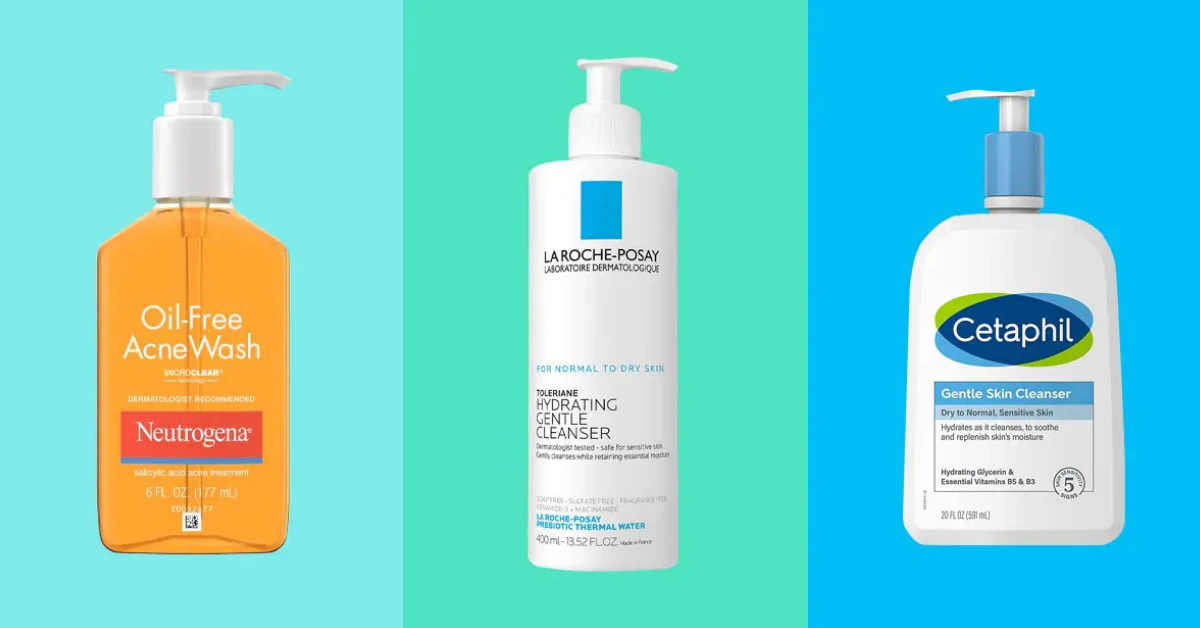

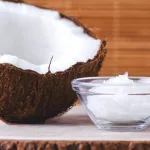


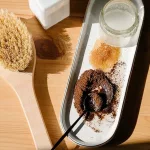

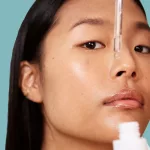
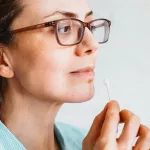


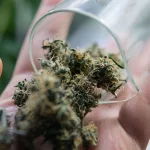





Leave a Reply
You must be logged in to post a comment.